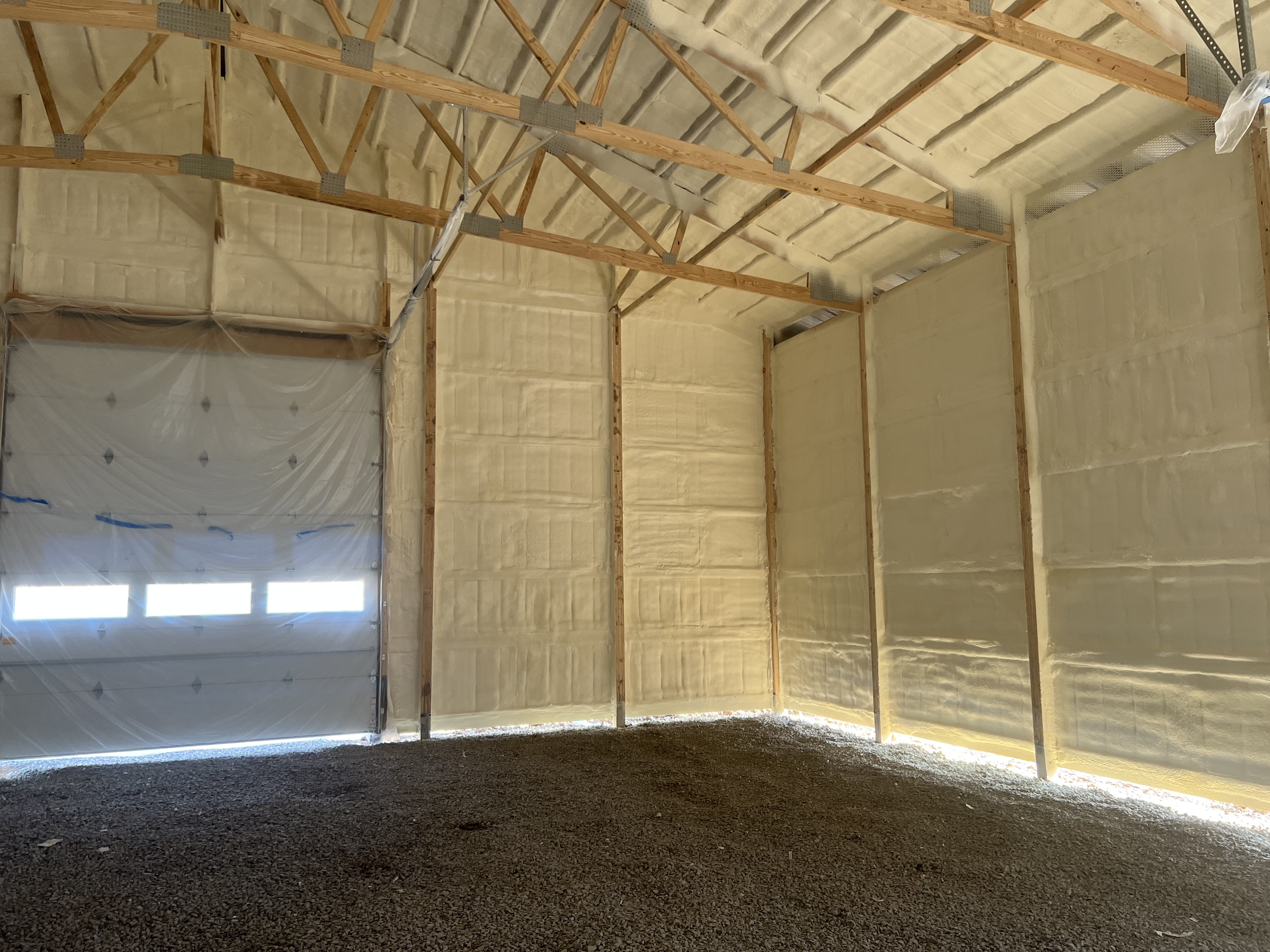What is the difference between open and closed cell spray foam?

Spray Foam Insulation is an excellent way of insulating your new home or building. When insulating with spray foam, you will have to decide whether you want to use "open" or "closed" cell foam for your application. Never fear, we're here to help demystify how spray foam insulation works and help determine the best choice for you!
"Open-cell" VS "Closed-cell"
To understand the difference between "open-cell" and "closed-cell", we have to understand what is a "cell"?
Immediately after spray foam is sprayed, it begins to expand and harden. During this process, tiny bubbles or "cells" form within the foam.
"Open-cell" spray foam expands quickly and to a greater volume, which causes these bubbles to tear. These tears in the cells allow the foam to fill with air, which means that "open-cell" foam is not a perfectly airtight seal.
"Closed-cell" foam on the other hand expands slower, creating tightly packed bubbles that are often referred to as "fully encapsulated", which simply means that the bubbles do not break apart or tear. These cells are filled with gases created during the expansion process and are perfectly airtight.
When to use open-cell spray foam?
We know that open-cell spray foam is not perfectly airtight and expands quickly, but when should we use it instead of closed-cell spray foam?
One of the primary driving factors of open-cell spray foam is that it is less expensive to manufacture and install.
Open-cell spray foam is lighter, softer, and more flexible than closed-cell spray foam because it's much less dense. It expands faster and takes up more space. Open-cell foam has excellent expansion properties and is often a great choice for filling cracks or sealing up those hard-to-reach places. It also has better sound deadening properties than closed-cell insulation.
Open-cell foam has an R-value of about 3.5 per inch and while it's not considered to be fully waterproof (because of the openings between cells), it is hydrophobic. If there is a leak and your spray foam insulation gets wet, it will not get moldy.
When to use closed-cell spray foam?
If you thought open-cell spray foam was good, closed-cell spray foam is basically twice as good.
Closed-cell spray foam is the highest quality spray foam you can buy. It creates an airtight and waterproof vapor barrier that completely prevents the transfer of moisture. With an R-value of about 7 per inch, closed-cell spray foam has incredibly high insulation properties and because it doesn't expand as much as open-cell, you can insulate to high R-values between studs without even filling the cavity.
It's much harder and stronger than open-cell foam because it's about 4 times as dense. In fact, closed-cell spray foam helps increase structural integrity which is great for keeping your pole barn straight and upright in a windstorm. No flex here!
You can even apply closed-cell spray foam externally to resist moisture. It is so moisture resistant in fact that closed-cell spray foam is recognized by FEMA as "flood-resistant".
Closed-cell spray foam is one of the best methods of insulation on the market but does come in at a price point higher than open-cell because it's more expensive to manufacture and install.
So which one is right for me?
Both open and closed cell spray foam are excellent insulators. The most important factor in achieving high energy efficiency is to create an air barrier, which spray-foam insulation does better than any other kind of insulation.
There are other benefits like the fact that spray foam offers no value to rodents! Mice love to build nests in cellulose and fiberglass insulation. Also, unlike cellulose, spray foam insulation never settles because it is bound to the walls and ceilings creating an envelope around your building.
The biggest factor that often helps inform the decision of open-cell VS closed-cell is the specific application (e.x. open-cell is better for sound deadening and filling cracks) and geographic location.
Why geographic location you ask? Because in northern states like Pennsylvania, New York, and Ohio, the winter season can be quite cold and internal building temperatures need to remain high creating a more drastic temperature difference between inside and outside.
This means that we will either need the higher R-values of closed-cell spray foam or a thicker layer of open-cell foam. When these higher R-values are needed, open-cell can be limited by wall thickness. Thus northern climates are often better suited for closed-cell spray foam. Structures in southern states often opt for open-cell to save money because even at the extremes of the seasons, the temperature differential between indoors and outdoors is not as substantial.
If you want to learn more about whether open or closed cell spray foam insulation is right for your project, Canopy Insulation, Co offers expert services to help guide you to the best decision.
Call us today or contact us online for a no-cost, no-obligation consultation!

